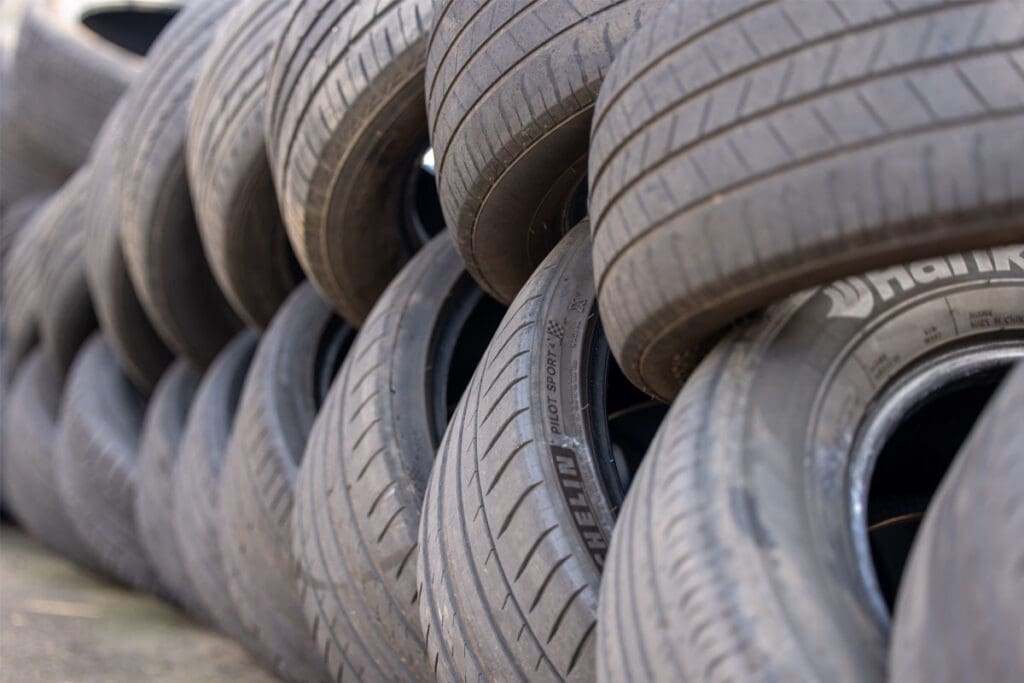Bike Industry Seeks Inclusion in National Tyre Recycling Stewardship

Melbourne, Victoria
A national recycling program for tyres from cars, motorcycles and large vehicles will be urged to expand to bike tyres, when Bicycle Industries Australia (BIA) meets with the scheme’s CEO next week.
The meeting next Tuesday will look at if and how used bicycle tyres and tubes can be incorporated into the Tyre Stewardship Program, a Federal Government-funded initiative launched five years ago to address the issue of automotive tyre waste.
BIA general manager Peter Bourke said he first approached the stewardship’s management last August to discuss the inclusion of bicycle tyres.
“With the stewardship nearing the end of its initial five-year strategy period, the program’s management has indicated now would be a good time for that discussion,” he said.
“The biggest hindrance for every recycling program in Australia is logistics – how you physically get the material where you need it to be without creating a bigger carbon footprint.”
“My understanding is bike tyres and tubes weren’t considered when the program was established. We certainly weren’t approach or included in the conversation at all.”
Peter said BIA’s new sustainability committee, formed in April, is committed to tyre recycling and strongly supported inclusion in the stewardship.
While some larger players in the bicycle industry are already undertaking some level of tyre recycling, inclusion in the stewardship would help overcome the biggest challenge to an industry-wide program – logistics.
“The biggest hindrance for every recycling program in Australia is logistics – how you physically get the material where you need it to be without creating a bigger carbon footprint,” he said.
“One of the challenges for us is recycling places only take in minimum quantity at a time. A single car tyre shop probably collects as much material as the Australian bicycle industry as a whole.
“The average car tyre at the end of its life is 8kg. A road bike tyre, depending on what type you’re talking about, is about 200 grams, while the average mountain bike tyre could be 800 grams.
“The stewardship has a strong logistics program of collecting and recycling tyres from around the country. Our inclusion would help up develop a system of collecting, delivering and recycling rubber around Australia.”
Approximately 6.5 million tubes and 4.5 million tyres come into Australia each year, loose and on bicycles.
“Currently, the vast majority of those tyres and tubes are disposed of in normal waste,” he said.
Peter will go into the meeting with stewardship CEO Lina Goodman with a number of ideas on how the inclusion of bike tyres and tubes would work.
“We’ve already had some correspondence and the meeting is about nutting out how it could be done,” he said.
“One of the main issues is that while the vast majority of car tyres are replaced at a tyre retailer, a massive chunk of bike tyres are changed at home. Do we promote tyre drop-offs at stores or do we have single collection points?
“That could include working with local governments to have transfer stations or drop-off points for rubber.
“We’ve got some really proactive companies, such as 99 Bikes, Schwalbe and Trek, that are already doing some tyre recycling in specific locations because of a commitment to sustainability, when it might not make economic sense.
“How do we combine those programs with the programs the stewardship has in place?”
Join the conversation
What system would you need to be in place for you to participate in a tyre recycling program?
